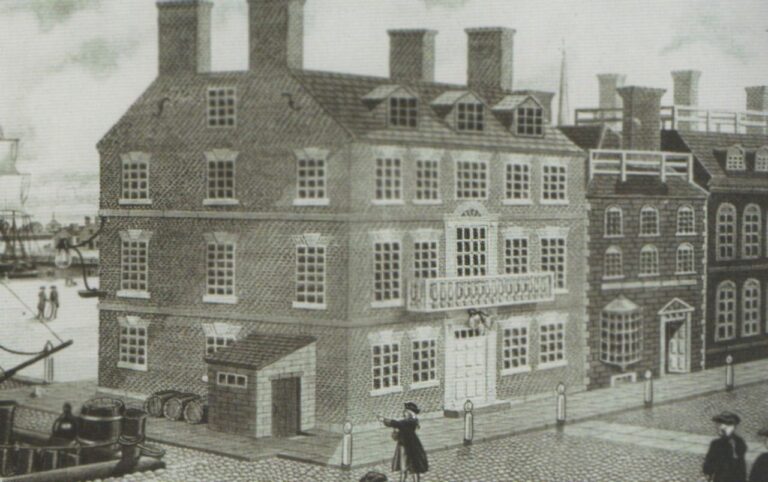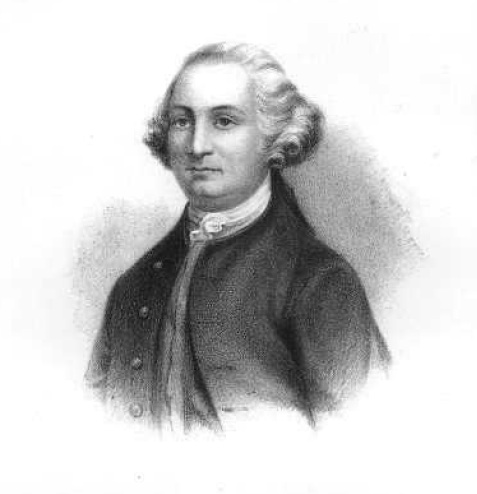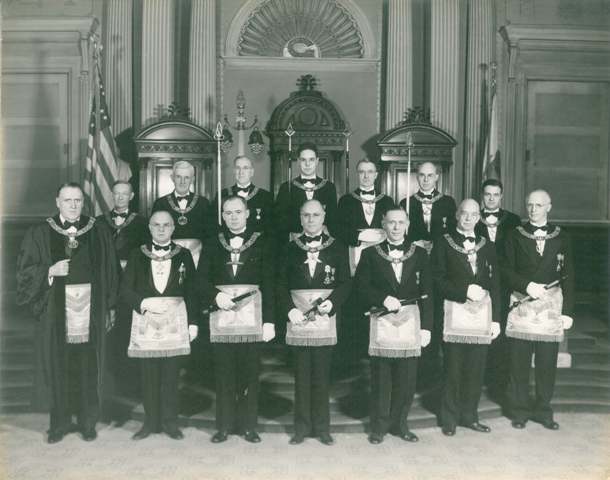Freemasonry is ingrained in the DNA of the United States of America. The fraternity has maintained a place on American soil nearly as far back as when the first pilgrims arrived. Many founding fathers were Freemasons, and countless brethren played a role in the fight for independence. As students of history and tradition, Masons have expertly passed down Masonic teachings and rituals for three centuries. Across generations and continents, our fraternity has continued to thrive while staying true to the values that first bound us together.
When considering the vitality and resiliency of Freemasonry, it may not surprise many that the first lodge in the Americas has stayed active to this very day. Indeed, St. John’s Lodge of Boston, Massachusetts, first chartered nearly 290 years ago, remains a vibrant hub of fraternalism in the 21st century.

St John’s: The Oldest Lodge in the United States
Freemasonry Comes to America
In 1717, the Premier Grand Lodge of England (later to merge with the Ancient Grand Lodge of England to make the United Grand Lodge of England) was established. Freemasonry was gaining momentum throughout England, and this body was formed to oversee Freemasonry in London. Even in the English colonies in America, the craft was surging in popularity, and colonists desired formal permission to create local Masonic lodges.
Masonic bodies throughout England began affiliating with the Premier Grand Lodge quickly after it was formed. In Massachusetts, Masons were eager to receive a dispensation to form lodges around Boston. Brothers in the colony urged Brother Henry Price to visit London and petition the Grand Lodge for a Warrant to establish lodges in America. Price heeded the pleas of his brethren and went to England, returning in the spring of 1733.
His visit proved a rousing success. He not only returned home with a Warrant for an individual lodge but a new title as well. While in England, Price was made the “Provincial Grand Master of New England and Dominions and Territories thereunto belonging” by the Grand Master, The Right Honorable and Right Worshipful Anthony Browne, 6th Viscount Montagu. Upon his return, the newly appointed Grand Master quickly established the Provincial Grand Lodge in Massachusetts, becoming known as St. John’s Grand Lodge.
Most Worshipful Brother Henry Price
As a local Bostonian, Henry Price held no distinguished positions in the community at large. However, his effort to bring Masonry to colonial America earned him a special place in the pages of Masonic history. When he held a meeting in Boston’s Bunch of Grapes Tavern on July 30th, 1733, to establish the Grand Lodge, he introduced traditions and values that would influence the lives of men and families across the continent for centuries to come. He even issued a charter to Benjamin Franklin in 1736 to establish a Masonic Lodge at Philadelphia.
Moore’s Freemason’s Monthly wrote of Price:
But his fame does not belong to Massachusetts alone. That he laid the foundation of it here, was one of those fortunate accidents by which men of humble pretensions are often exalted to places of honor and distinction. It was a necessity of the time; and that he successfully availed himself of its advantages proves, if it prove anything, his fidelity to duty and clear appreciation of the beneficent influences of an institution which, from its marvelous adaptation to the needs of a young and growing country, he foresaw would, with the blessing of Providence, and under the careful guidance of those to whom its future should be entrusted, grow up and become an important instrumentality in giving a healthful tone and direction to the normal character of the rapidly increasing population of his adopted home. Moore’s Freemason’s Monthly Vol. XXXII, No. 2, February 1873, Page 33

Henry Price, the first Provincial Grand Master of New England and Dominions and Territories
Today, The Grand Lodge of Massachusetts has an award named for its founder. The Henry Price Medal is the highest honor a Freemason can receive in Massachusetts.
The First Lodge
With eager Masons throughout the colonies ready for approval to formally conduct Masonic business at the local level, Grand Master Price quickly began chartering lodges throughout the colonies. His first charter was in 1733 for a lodge in Boston that became known as First Lodge. It went formally by this moniker until 1783, when it merged with “Second Lodge,” the first recorded lodge merger in the Americas.

The officers of Boston’s St. John’s Lodge, circa 1936. Courtesy of the Scottish Rite Masonic Museum and Library.
First Lodge was closely associated with St. John’s Grand Lodge from the beginning. Now known as St. John’s Lodge, it is the oldest continuously practicing Masonic lodge in the United States. Famous Masons, including founding fathers such as George Washington, visited the lodge during visits to Boston. Today, it has held over 3,700 regular meetings and continues bringing together men of all backgrounds to celebrate shared values and fraternalism.